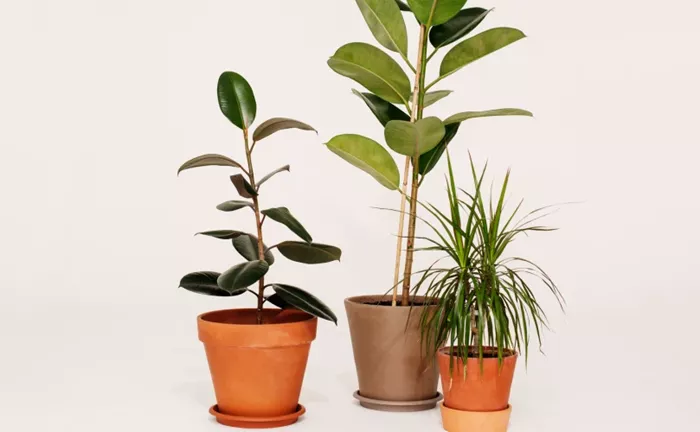Repotting houseplants is crucial for their health. Moving plants to larger containers allows roots to expand and helps them access fresh nutrients. However, neglecting this task can lead to problems like yellowing leaves and stunted growth. When plants become pot-bound, their roots intertwine and harden, trapping them in their pots.
Different plants handle being pot-bound differently. Some can remain in smaller pots longer than others. If you’re looking for low-maintenance houseplants that don’t need frequent repotting, here are eight options that can tolerate being somewhat pot-bound.
1. Spider Plant
The spider plant is one of the easiest indoor plants to care for. It requires minimal attention and can thrive without repotting for several years. According to Julie Bawden-Davis, an indoor plant expert at Healthy Houseplants, “Spider plants prefer to be root-bound and may die back if placed in an overly large pot.” Overly large pots can lead to root rot because the soil remains wet for too long. Repot when roots emerge from drainage holes or water rushes through quickly. When the spider plant’s leaves turn yellow, it might be time to check if it needs a larger pot.
2. African Violet
African violets, despite being flowering plants, handle being pot-bound well. Lisa Eldred Steinkopf from The Houseplant Guru notes, “African violets like to be snug in their pots. As they drop lower leaves, they form long stems.” When these plants shed leaves or exhibit leggy growth, it may be time to repot. Typically, a 4-inch pot is sufficient. If the plant stops flowering, it might need a larger pot.
3. Jade Plant
Jade plants grow slowly, making them ideal for those who prefer less frequent repotting. They grow at about two inches per year. Julie Bawden-Davis explains, “Jade plants prefer to be root-bound. Repotting too early can lead to wet soil and root rot.” Repot when the soil dries out quickly between waterings or when water rushes through the pot. Jade plants generally need repotting every three to four years.
4. Alocasia
Alocasias, another low-maintenance option, do well in tighter spaces. Julie Bawden-Davis mentions, “Alocasias grow better when slightly pot-bound.” These tropical plants may droop if repotted into a pot that’s too large, due to root rot or shock. Repot every 18 months, or when watering no longer moistens the soil properly.
5. Hoya
Hoyas are known for their beautiful blooms and low maintenance. Native to Southeast Asia, these plants can stay in the same pot for up to five years. Lisa Eldred Steinkopf notes, “Hoyas like to be snug in their pots and often wait until their roots fill the pot before flowering.” If a hoya isn’t flowering, it might need more time or might have been repotted too soon. Repot when roots are visible or the soil absorbs water poorly.
6. Snake Plant
The snake plant, also known for air-purifying qualities, is easy to care for and doesn’t need frequent repotting. Julie Bawden-Davis explains, “Snake plants can suffer from root rot if placed in overly wet soil. Letting the plant remain root-bound helps avoid this issue.” However, if the plant becomes top-heavy or water rushes through quickly, it may need repotting. Despite its hardiness, snake plants can break their pots if they receive full sun and are very healthy.
7. Christmas Cactus
Christmas and Thanksgiving cacti can thrive without frequent repotting. These cacti, which differ in leaf shape and flowering times, use energy to grow roots before blooming. Lisa Eldred Steinkopf advises, “Repot these cacti every couple of years to ensure they have enough space.” If repotted too often, they may not flower well. Allow the plant to grow large and develop a strong root system before repotting.
8. Kalanchoe
Kalanchoes are popular for their year-round blooms and slow growth. These succulents can remain pot-bound for a long time. Julie Bawden-Davis states, “Kalanchoes prefer being slightly root-bound. Overwatering can lead to root rot, so keep the soil dry between waterings.” Repot every couple of years, preferably after the plant has finished blooming.
By choosing the right houseplants and repotting them when necessary, you can ensure they stay healthy and vibrant for years to come.
Related topics:
- Asteraceae: The Most Diverse Flowering Plant Family in the World
- 7 Plants to Add Bright Colors to Your Fall Garden for a Touch of Autumn Beauty
- Garden Club Focuses on Invasive Plants in Upcoming Program


